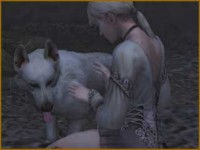|
|
|
Main News Forums Games Games Database Top 100 Release List Support Files Features Reviews Previews Interviews Editorials Diaries Misc Download Gallery Music Screenshots Videos Miscellaneous Staff Members Privacy Statement |
Multiclassing Icewind Dale 2 will use 3E multiclassing rules. Unlike 2nd Edition, in which human characters dual-classed (start in one class, then stop in that class and start in a second, never to return) and demi-human characters split-classed (advance at an equal rate in two or more pre-selected classes), both humans and demi-humans have the same options available to them. All characters start game play with one class. Every time the character advances, the player has the option of advancing in the character's current class, or adding a level in another class. The amount of experience required to advance is based off of total class levels (character level) rather than individual class levels. For example, it takes as much XP to advance a character from level 4 fighter to level 5 fighter as it does to advance a character from level 4 fighter to level 4 fighter/level 1 rogue. Characters gain the full cumulative bonuses of all their levels instead of the "best of" between both classes. For instance, if a character has +4 BAB from his fighter levels and a +2 BAB from his wizard levels, he would have a +6 BAB, not +4. The same applies for saving throws. Hit points are not divided between classes. A character gets the total hit dice for each set of class levels he or she has. E.g., a fighter 7 / rogue 4 / wizard 5 would have 7d10 + 4d6 + 5d4 hit points, modified by constitution. Characters may multiclass to any class to which they do not have alignment conflicts, with the exception of the monk and paladin classes. Paladins and monks each have three orders that allow them to multiclass to one class and back again. For example, paladins of Ilmater, the god of suffering, may multiclass to cleric and back again. Dark Moon monks of Shar may multiclass to sorcerer and back again. No characters may multiclass into the paladin or monk classes after character creation. In theory, a character can take as many classes as a player qualifies for. However, this typically makes the character much less effective than a single or double classed character. In addition, when class levels get out of synch with each other, the character can be penalized XP. Without going into the details of the formula, a character is penalized a small amount of XP whenever one or more of his or her classes is more than one level away from another. There is an exception to this rule: racial favored class. Each race has a favored class which is ignored for the purposes of calculating multiclass XP penalties. For elves, it is wizard. For dwarves, it is fighters. For halflings, it is thieves. For gnomes, it is wizard. For half-orcs, it is barbarian. Half-elves and humans always ignore the highest class level they have. This gives them a range of flexibility that the other classes lack. All races should be able to select all classes. |
||||||
|
All original content of this site is copyrighted by RPGWatch. Copying or reproducing of any part of this site is strictly prohibited. Taking anything from this site without authorisation will be considered stealing and we'll be forced to visit you and jump on your legs until you give it back. |
||




